





































































David
Austin, Texas USA
Head of Magazine & Design Department
Mehdi Maasoomi
Head of Sales Department

Aphina Martley
Head of Marketing Department
Ninna Sharadze
Head of Logistic Department
Kate Gubaeva
Social Media Manager

Niniko Jakeli
Accounting Department
Ia Surmanidze
Sales Agents
Ajara
Ajara Life, the English language online and print publication headquartered in Batumi, launched in 2021 under Ruebush Hospitality Group LTD. With over 30 years experience in hospitality and over 15 years of experience in the media industry and our staffs’ commitment, knowledge and energy we feel confident that we will become the most recognised and respected infotainment and Tourist Guide in Ajara & Georgia.
Our genuine point of difference is our primary focus on tourist attractions of different cities in Ajara, Georgia, Cultures, Traditions, Foods and Historical Places, Investment opportunities and Real Estate, Businesses and their activities, Product and Service Offers as well as Public Awareness on New Rules and Regulations, Events and Campaigns so that both business owners, readers and listeners – either Georgian residents or Tourists – win benefit.
Besides, We gather information on the City’s Best Shops, Restaurants, Bars and Hotels, provide the most useful tourist and travel tips, highlight the best in Museum, Theatre and the events in town.
Having the advantage of reaching a wide number of people globally through our online Magazine and Supplement, We intend to better introduce and promote Ajara & Georgia, provide awareness on its tourism potential and information on investment opportunities in various sectors for investors.
Ajara Life Magazine is ideal for introducing new products and services, building established brands, presenting seasonal promotions and getting the return on investment that you expect.


The main city of Adjara-Batumi was declared the best tourist destination by the American Academy of Hospitality Sciences in 2012. In recent Forbes rankings, Batumi was given a place amongst top five ‘velvet season’ recreational resorts.
However, this doesn’t mean that Batumi is suitable for only ‘velvet season’ leisure activities. You can visit the city all year round for business or recreation. Batumi can be a perfect destination whether for high-profile international meetings or family weekends. Furthermore, Batumi city is desirable in any weather.
The rainy Batumi is romantic - Colourful umbrellas, cheerful people-pebbled streets and hot steam of coffee on the sand, seeping through cozy local cafes. Colourful
doors lead you to these cafes. There’s a lot of them in Batumi and taking photos against their background has become a tradition for the city guests.
In old Batumi, next to Piazza, in the alcove of a historical house on Gorgasali street, you can find the statue of a boy with a flute. This statue is considered to be a symbol of Batumi and has acquired such popularity that its modern, modification versions can be found by the entrance of the city boulevard. Check out Ali and Nino sculpture – their extraordinary date expressed in metal awakes wonderful emotions.
Start from there and be confident that there is much to see. With its old and new architecture, old port, European

style squares, high-class hotels and other attractions
Batumi is Georgia’s one of the best parts and cultural centers. You can get to the city easily, through terrestrial, aerial and maritime transport be it from European or Asian countries.
In addition to conference halls where international level conferences take place, Batumi offers various means of entertainment: aqua park, horse riding club, Ferris Wheel, maritime cruises, fly boarding, diving-center, paragliding, cycling, cinemas, casinos. You can also attend annual classical and jazz music festivals where a number of global stars have featured already.
If you find yourself in Batumi in autumn, you will be able to participate in two large-scale events – “Batumoba”
and rural tourism festival – “Gandagana”. On these events markets, concerts, theatrical performances and exhibitions take place. “Gandagana” festival features special decorations on Era square. They represent Adjarian villages and display a wide variety of fruits, local food, wine and sweet delicacies that fill the air with a pleasant smell.
Batumi will open its theatre and exhibition hall doors for you. Spaces where you can walk and think about the past, the present and the future. Batumi feels like a yard which is full of happiness!
This is Batumi – the city which will take its distinguished place in your memories.
Source: Gobatumi.com
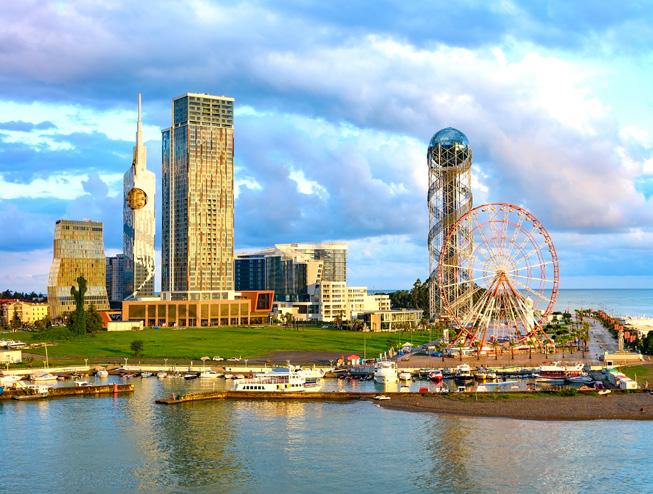
Valentine greetings were popular as far back as the Middle Ages, though written Valentine’s didn’t begin to appear until after 1400.
Every February 14, across the United States and in other places around the world, candy, flowers and gifts are exchanged between loved ones, all in the name of St. Valentine. But who is this mysterious saint, and where did these traditions come from? Find out about the history of this centuries-old holiday, from ancient Roman rituals to the customs of Victorian England.
The history of Valentine’s Day–and the story of its patron saint–is shrouded in mystery. We do know that February has long been celebrated as a month of romance, and that St. Valentine’s Day, as we know it today, contains vestiges of both Christian and ancient Roman tradition.

But who was Saint Valentine, and how did he become associated with this ancient rite?
The Catholic Church recognizes at least three different saints named Valentine or Valentinus, all of whom were martyred. One legend contends that Valentine was a priest who served during the third century in Rome. When Emperor Claudius II decided that single men made better soldiers than those with wives and families, he outlawed marriage for young men. Valentine, realizing the injustice of the decree, defied Claudius and continued to perform marriages for young lovers in secret. When Valentine’s actions were discovered, Claudius ordered that he be put to death.
Other stories suggest that Valentine may have been killed for attempting to help Christians escape harsh Roman prisons, where they were often beaten and tortured. According to one legend, an imprisoned Valentine actually sent the first “valentine” greeting himself after he fell in love with a young girl–possibly his jailor’s daughter–who visited him during his confinement. Before his death, it is alleged that he wrote her a letter signed “From your Valentine,” an expression that is still in use today. Although the truth behind the Valentine legends is murky, the stories all emphasize his appeal as a sympathetic, heroic and–most importantly–romantic figure. By the Middle Ages, perhaps thanks to this reputation, Valentine would become one of the most popular saints in England and France.
While some believe that Valentine’s Day is celebrated in the middle of February to commemorate the anniversary of Valentine’s death or burial–which probably occurred around A.D. 270–others claim that the Christian church may have decided to place St. Valentine’s feast day in the middle of February in an effort to “Christianize” the pagan celebration of Lupercalia. Celebrated at the ides of February, or February 15, Lupercalia was a fertility festival dedicated to Faunus, the Roman god of agriculture, as well as to the Roman founders Romulus and Remus. To begin the festival, members of the Luperci, an order of Roman priests, would gather at a sacred cave where the infants Romulus and Remus, the founders of Rome, were believed to have been cared for by a she-wolf or lupa. The priests would sacrifice a goat, for fertility, and a dog, for purification. They would then strip the goat’s hide into strips, dip them into the sacrificial blood and take to the streets, gently slapping both women and crop fields with the goat hide. Far from being fearful, Roman women welcomed the touch of the hides because it was believed to make them more fertile in the coming year. Later in the day, according to legend, all the young women in the city would place their names in a big urn. The city’s bachelors would each choose a name and become paired for the year with his chosen
woman. These matches often ended in marriage.
Lupercalia survived the initial rise of Christianity and but was outlawed—as it was deemed “un-Christian”–at the end of the 5th century, when Pope Gelasius declared February 14 St. Valentine’s Day.
It was not until much later, however, that the day became definitively associated with love. During the Middle Ages, it was commonly believed in France and England that February 14 was the beginning of birds’ mating season, which added to the idea that the middle of Valentine’s Day should be a day for romance.

Valentine greetings were popular as far back as the Middle Ages, though written Valentine’s didn’t begin to appear until after 1400. The oldest known valentine still in existence today was a poem written in 1415 by Charles, Duke of Orleans, to his wife while he was imprisoned in the Tower of London following his capture at the Battle of Agincourt. (The greeting is now part of the manuscript collection of the British Library in London, England.) Several years later, it is believed that King Henry V hired a writer named John Lydgate to compose a valentine note to Catherine of Valois.
Source: History.com
THERE ARE MANY REASONS TO VISIT ADJARA BUT HERE ARE OUR TOP 6:

Exceptional hospitality and the goodwill of the Georgian people make every trip to Georgia very special. According to an ancient Georgian proverb, God sends visitors to Georgia. As such, Georgian culture has developed a strong culture of hospitality. As a guest in Georgia, you will not only experience unparalleled hospitality, but you will also be astounded by the genuine kindness of the Georgian people.

Batumi is one of the oldest cities in Georgia founded as before the Common Era. The initial settlement “Batus” is mentioned in sources from the 4th century BCE. The city’s unique history has contributed to the city’s vast architectural diversity. In the 19th century, during the “Porto Franco” period, European architects completed a number of interesting architectural projects. Later during the soviet and post-soviet times, Batumi was developed into a popular seaport and tourist destination. To this day, Batumi is still distinguished by a variety of buildings of different architectural styles.
The Georgian Supra (a traditional feast) has no equivalent around the world. The culture of toasting does exist in many cultures; however, the Georgian “Tamada” or toastmaster has no parallel. The role of the Tamada is to lead the Supra. The Tamada is considered to be the most honorable member of a traditional Georgian Supra. The ideal Tamada is well educated, has extensive knowledge of Georgia’s history and culture, is eloquent, is sociable, has a good sense of humor and has musical ability. The Tamada should be able to lead a series of toasts on a variety of topics. He should also be able to entertain guests with poems, songs and interesting stories. The Georgian Supra is a fundamental element of Georgian identity, which is why the tradition has been preserved to this very day. In total, there are approximately 300 different toasts, some of which are obligatory for each Supra, regardless of its duration.
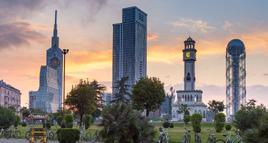
All parts of Georgia are interesting, but Ajara is place with the sea, the mountains, interesting traditions and a lot of other reasons why you should visit this region.


A traditional Georgian feast is a superb display of the diversity of Georgian cuisine, cooking techniques, tablesetting traditions and other accompanying rituals. Ajarian cuisine is an inseparable aspect of Georgian cuisine. In mountainous Ajara, dairy products are common ingredients in many dishes. Boat-shaped Ajarian khachapuri is one of the most famous Ajarian dishes. Sweets also play an important role in Ajarian cuisine. Viticulture is an essential component of Georgian and Ajarian culture that has been cultivated for hundreds of years. In total, there are around 50 different grape species in Ajara that are still used in wine production to this very day.
Georgia is one of the oldest Christian countries in the world, which has had a significant influence on Georgian culture. Gonio, one of the oldest settlements in Georgia, is located in Ajara. It was inhabited in the 8th-7th century BCE. The Gonio Fortress, which was built by the Romans, has mythic ties to the legend of Jason and the Argonauts. Ajara is famous for its stone-arch bridges and different religious monuments. The monasteries, Gelati and Bagrati recognized by UNESCO as World Heritage Sites are located just a few hours’ drive from Batumi. Tbilisi, Mtskheta and other parts of Georgia are also very rich in unique and diverse cultural monuments. Moreover, non-material culture, such as Georgian polyphony and dances, are important parts of Georgian culture. Ajarian songs and dances occupy a special place in Georgian folklore.
Adjara is part of the ancient Kingdom of Colchis, the place where every monument hides history behind it. If you like to read the history in monuments or artefacts, then Adjara should find its spot on your list of the world’s must-see places.
Batumi is an attractive destination not only during the summer season but also in spring and autumn. Visitors can sunbathe or swim as early as the beginning of May. The sea becomes even more pleasant during September and October, given Batumi’s long Indian summers. Winters are warm and summers are hot in Batumi. In addition to the seaside, visitors can also trek to the amazing mountainous regions of Ajara.

Adjara is the place of new rendezvous where you can have fun and leisure at any time of the year. Adjara has many places to see and discover, especially when you visit for the first time. However, please keep in mind one thing - you want to come back here again.
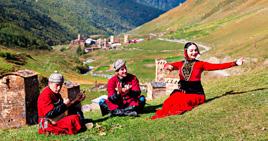

In the new millennium, the boulevard continued to grow at a more rapid pace, antique stile marble sculptures and colonnades project were brought from Italiy, the Summer theater were built, three colored fountains worked out.
In 1881, the governor of Batumi district, A. Smekalov had appeared an idea of creating a seaside park. This is where begins the history of Batumi Boulevard. The first project of the boulevard was developed by well-known Prussian gardeners Ressler and Reier. In 1884, Reseller died, and the successful initiative was handed over to a French nobleman, a famous garden designer Michel D’Alfonse. His contribution to the boulevard planning is so great that in historical sources, D’Alfonse is referred as “Kind genius of Batumi seaside”. The next stage of the boulevard development is associated with the gardener-decorator Iason Gordeziani, who using the knowledge gained in the Versailles Agricultural National Institute, encouraged herbal cover, expanded old and created new nurseries. In the new millennium, the boulevard continued to grow at a more rapid pace, antique stile marble sculptures and colonnades project were brought from Italiy, the Summer theater were built, three colored fountains worked out.
The history of the Batumi Boulevard includes this century-long, continuous cycle, in which all the stages
of the seaside park were enriched and gained the sacred significance. Today it is the most visited and characteristic sight of our city.

Batumi Boulevard is the main and most visited sightseeing of the city.
Georgia, distinguished by its growing tourist statistics, hosts about 8 million international visitors annually and about 2 million tourists visit Batumi, named as the Black Sea Pearl.
It is noteworthy that walking in Boulevard for an alien or Georgian citizen who is in Batumi is a ritual, without which no one leaves this beautiful seaside city. The recreation zone, which at the same time is a cultural heritage monument, for centuries, has unites the city’s guests or native inhabitants. It involves a seven-kilometer seaside promenade, 4 historic alleys, bike path, and more than 40 thousand tree-plants planted at different times on the area.
Batumi Boulevard, with its historical meaning and continuous development cycle, became a visiting card of our city where everyone finds their place.

The foundation of the Batumi Boulevard is associated with the French Gardener Michael D’Alfons. In 1885 he has assigned on the post of the main gardener of Batumi and he is the one who started to develop the boulevard in the French style.
To celebrate his contribution to the development not only of the boulevard but also Batumi botanical gardens, he was often referred to as the kind genius of the Batumi seaside area.


In 2012 the bronze sculpture of Michael D’alfons was installed in the boulevard. Facing the eucalyptus planed by himself, Michael’s sculpture features a satisfied expression on his face.
The gardener, decorator, Iason Gordezian has played a key role in development of Batumi Boulevard. Under his management, new species of plants were introduced and planted. After his success, he went abroad to continue his education. In 1911 he graduated from the Versailles national institute of agriculture. He gained experience of working in gardens in France, Belgium, Switzerland, and Holland. He also held a position of the gardener-decorator in the royal botanical garden in London. After returning to Georgia he brought extensive knowledge and expertise back to the country that he used in implementing number of large-scale projects. In 2012 the sculpture of Iason Gordezian was set up in Batumi Boulevard.
For over decades as the Batumi Boulevard has been growing, new sculptures and landmarks have been added.
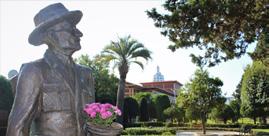
However, the importance and the value of the colonnades have remained timeless making them one of the iconic symbols of Batumi. The local doctor Ivane Mtchedlidze is believed to bring the project from Italy in 1930 with the help of Maksim Gorki.
The construction works were supervised by the chief architect of the town Pavle Nadareishvili while the works were executed by the honorable architect in Georgia Bogdan Kirakosyan.
As the mosaic inscription on the colonnades says the construction processes were completed in 1934.
Created by the USA-based Georgian sculptor, Tamar Kvesitadze, a kinetic sculpture of Ali and Nino is undoubtedly one of the most popular tourist attractions in the Boulevard.

7-meter constructions of a man and a woman perform a circular motions for 8-10 minutes eventually merging into each other.
The sculpture was inspired by the Azerbaijani novelist Kurban Said’s eponymous novel.
The sculpture symbolizes eternal motion, love and convergence of cultures. However, each visitor can have his/her unique emotions and associations after attending this performance.
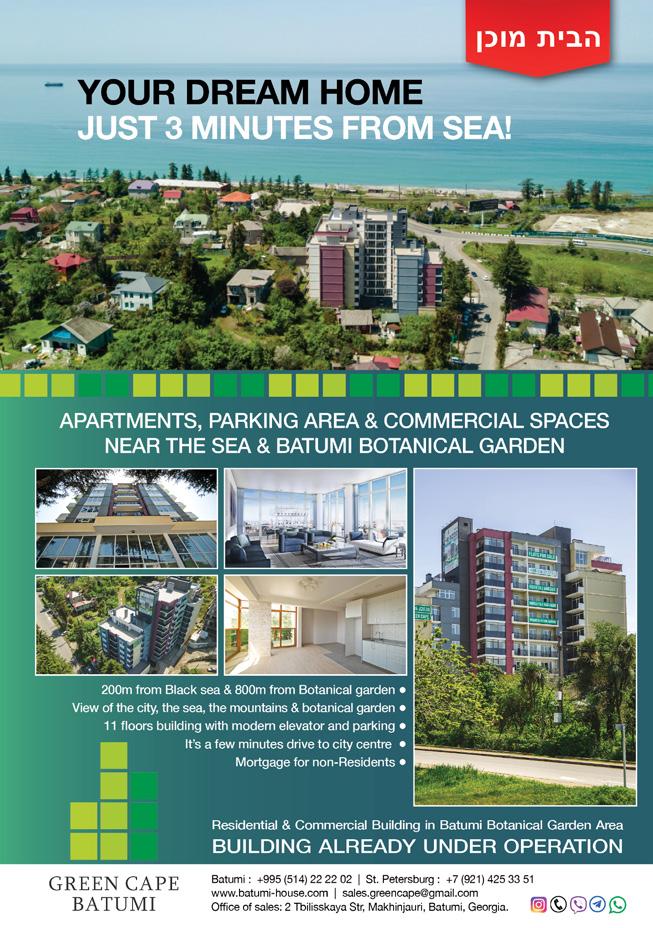
In 1948-1949 a unique wooden building was constructed in Batumi without a single nail.
This was the summer theater hosting concerts, events and celebrations. In 1998 a devastating fire destroyed the building.
In 2013 the exact replica of Batumi Summer Theater was constructed which continues to host events.

Thanks to joint efforts of the prominent Georgian architect Giorgi Erkomaishvili and the Armenian engineers, three colorful fountains were installed in the central entrance of Batumi Boulevard in 1977 bringing vibrancy and a new splash of life to the area.


In 2007, the fountains underwent large-scale renovations as a result of which music was added to them.
Nowadays these musical fountains dancing with rhythm and surrounded by lovely wax sculptures of the boys with pipes, represent the major attraction for tourists.
The café fantasy, also known as Octopus is a truly beautiful and magnificent sample of the mosaic art preserved till nowadays in Batumi Boulevard. Designed by the Georgian painter Zurab Kapanadze, the open air café fantasy was opened in 1981 and was functioning for 37 years. Currently it is undergoing major renovation works and a reopening is expected in the near future. The cafe fantasy is one of the symbols of Batumi.
The peaceful and romantic environment characteristic to the Boulevard has been formed over the years.
Abundance of fountains definitely contributes to the creation of this mood. In 2012 the sculpture a woman on a bike was set up according to the Georgian architect, Irakli Zhvania’s project.
The sculpture is beautifully located in a fountain making it even more peculiar


A 130-meter Alphabet Tower is located in the Boulevard right in the Miracle Park. The architecture of the Alphabet Tower was inspired by the Georgian alphabet which is performed in the shape of DNA alluding to the special importance the Georgian people adhere to the Georgian Alphabet.
Two spiral lines go up to the tower carrying 33 Georgian letters 4 meters each. The Spanish architect Alberto Domingo Cabo designed the project celebrating the Georgian alphabet in a unique way.
Guests of the Alphabet Tower can enjoy breathtaking views on the Black sea from the watching platform (called Panorama bar) which also serves snacks and beverages. The building also houses a rotating restaurant offering wide range of delicious Georgian and European dishes. One turn takes 60 minutes enabling you to have 360 degree views while having your meal.
The first building of the lighthouse was built in 1863, before the Batumi Boulevard was developed. In 1882 it was redesigned according to the project of the French engineers and since then already for 155 it has been guiding the ships entering the Black sea.
The light coming from the lighthouse stretches far away for 14 sea miles. In addition, the lighthouse is located in a unique spot, where 41 degree parallels of the longitude and the latitude coincide with each other.

The lighthouse also performs the function of a hydrographic center, where weather forecasters observe weather conditions for 24/7. Being an innovative sample of the engineering of that time, the lighthouse has become one of the symbols of Batumi.
Batumi Boulevard, with its historical meaning and continuous development cycle, became a visiting card of our city where everyone finds their place.

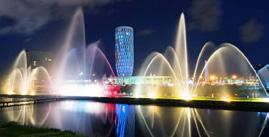
Similar to Old Boulevard, New Boulevard houses number of tourist attractions.
One of them is the French dancing fountains attracting visitors with its hologram shows. ou can watch this beautiful show from a specially arranged platform.
The Japanese garden is set up stretching over 1020 sq.m. nearby the university building.
The garden features a miniature lake, decorative bridge and plants typical for the Eastern culture. Finding the Japanese garden is quite easy thanks to red Japanese style entrance gates. (Source: boulevard.ge)







комплекс из 6 вилл
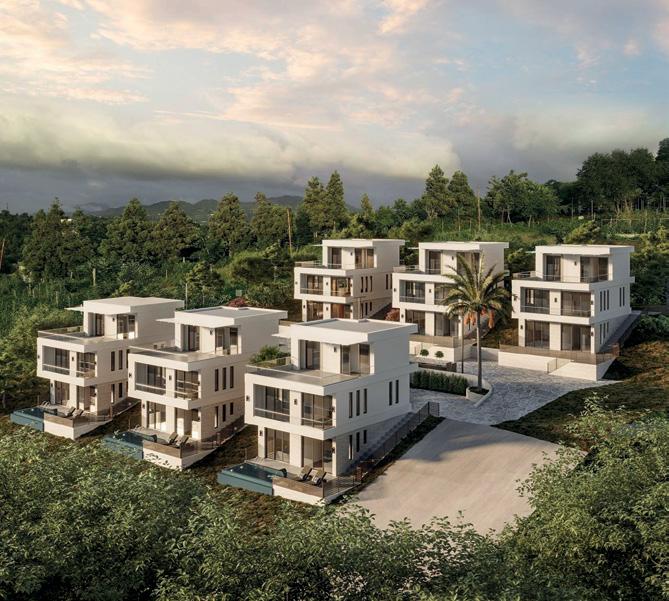
Уникальная локация для комфортного отдыха: 100 метров до пляжа
Инвестиционная привлекательность коттеджей премиум-класса


There are four to five villages next to a mountain.

A new airport in Mestia - Queen Tamar Airport - has recently opened, and flights between Mestia and Tbilisi are now available 5 times a week for 125 lari (including transfer to Tbilisi if flying from Mestia) each way. Reserve tickets at least a week in advance.
By trainFrom Tbilisi to Zugdidi by night train, then take a
marshrutka (minibus) from Zugdidi train station to Mestia. Ticket price around 45 - 55 GEL (2022). Duration 3-4 hours.
Tbilisi - Mestia marshrutkas (mini buses) go every day from “Vagzali” bus station. Number of seats 16, ticket price 45 Gel per person. Departure time : 5:00 am. Duration 8-9 hours (depends on the weather conditions).
Mestia-Tbilisi mini bus leaves at 7am and 8am. It is possible to book beforehand through hotels and agencies in the center of town. Only one (maximum 2) marshrutka goes
to Zugdidi at 6 a.m. and around midday. Costs 35 lari There are also marshrytki to Batumi.
From Zugdidi, just go to the train station (all the mashrutkas are there) and try to find the Mestia sign on a small shop (or ask around). They leave every time the mini bus is full and it costs 35 GEL (you can say it’s 25 GEL and they usually say OK).
From Kutaisi there’s a daily morning mini-bus from the main bus station (near McDonalds). It has no definite schedule and departs when full. Try to come early, by 9am it might already
be gone. In this case, however, you can catch marshrutka to Zugdidi (20 Gel, July’2021). Ask the driver to drop you off at the mini-bus to Mestia. Be prepared to wait for some time until the bus if full. This second leg of the trip will cost you another 35 lari.
By carA new highway from Zugdidi to Mestia has been opened and the trip has become safe and comfortable by public or private transport. (Drive off-road cars with high attention if you are not an experienced driver). A taxi cost 150 - 175 GEL from Zugdidi to Mestia and can hold four people.


Mestia, the main regional center of Zemo (upper) Svaneti, is situated 456 km from Georgia’s capital city, Tbilisi, and is 1,500 meters above sea level.
It is the starting point for most trips to Svaneti, with a range of hotels, guesthouses and local travel services, and makes a convenient base for exploring the area. From the center of Mestia it is possible to hike up to the glaciers at the foot of mount Ushba, or take horses into the pristine alpine mead-

ows. A new ski resort makes it possible to ski or snowboard even in the height of summer.
Tourists interested in religious history will find plenty of examples of wall paintings, frescoes and icons from the Middle Ages in the churches around Mestia. Within Mestia, the Church of Saint George contains well-preserved crosses and icons from the XII century. Additionally, Pusdi Church still contains fragments of XIII century wall paintings.
“
“
MESTIA IS A CITY IN UPPER SVANETI, GEORGIA. IT’S THE REGIONAL CAPITAL.
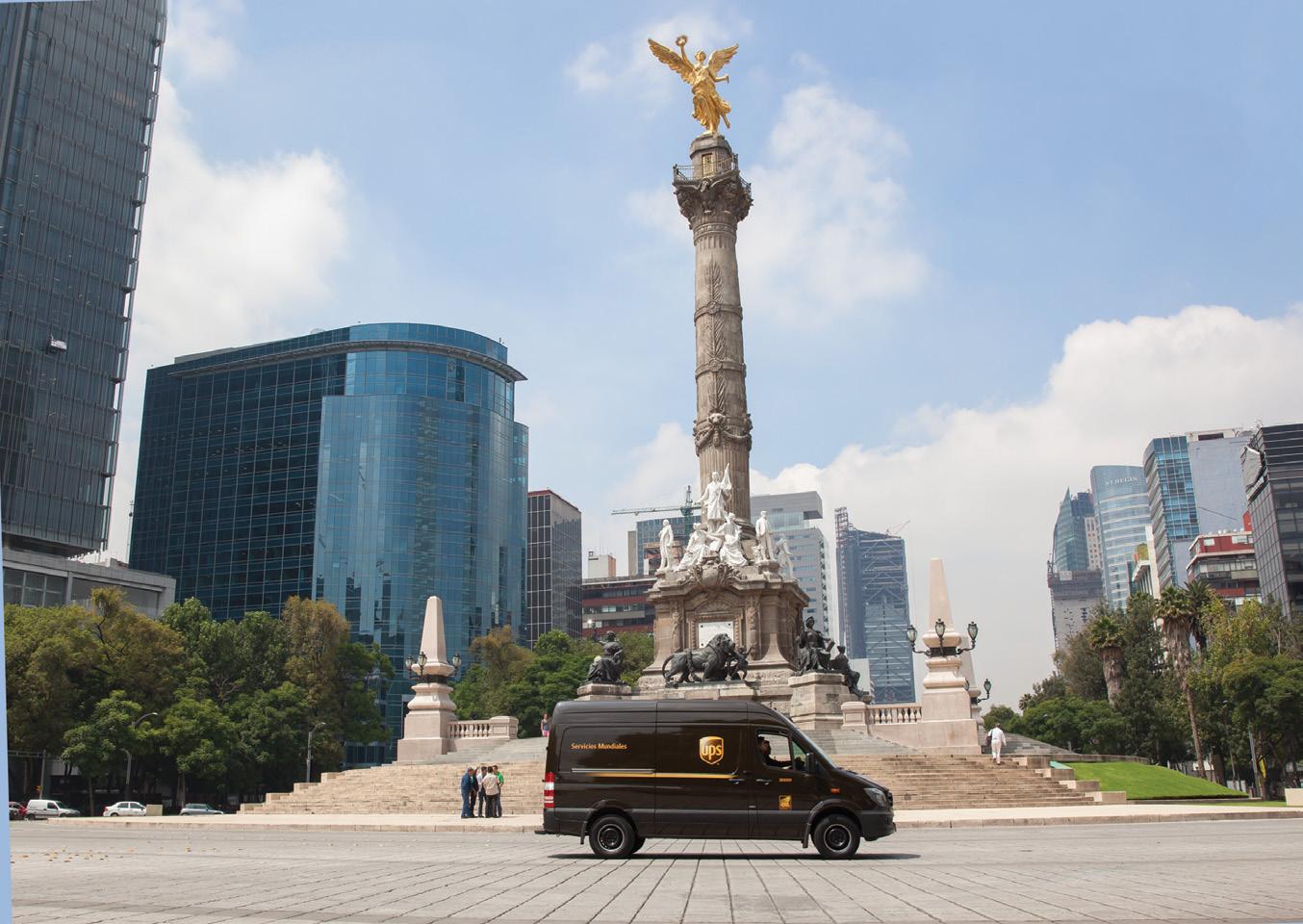
UPS (NYSE: UPS) is a global leader in logistics, offering a broad range of solutions including transporting packages and freight; facilitating international trade, and deploying advanced technology to more efficiently manage the world of business. Headquartered in Atlanta, UPS serves more than 220 countries and territories worldwide, having more than 434,000 employees. The company can be found on the web at www.ups.com® and its corporate blog can be found at longitudes. ups.com. To get UPS news direct, visit pressroom.ups.com/RSS. UPS has broken barriers throughout its 100+ years as a leader in global commerce and is recognized as one of World’s Most Ethical Companies for Eleventh Consecutive year.
In Georgia, Meridian Express LTD acts as the Authorized Service Contractor of UPS and provides high quality international and domestic express shipping and logistic services to customers. Meridian Express Ltd. provides UPS services in Georgia in compliance with UPS standards and quality and focuses on customers’ individual needs, demands and problem solutions.

Akhaltsikhe is a town in Southern Georgia, founded in Middle Ages. Its name means “a new fortress”, because the town’s fortress used to be the most important landmark of the region. In 1579 it was a center of a region of Ottoman Empire, then, during Russian – Turkish war in 1828 – 1829, it was brought back to Georgia, which used to be a part of Russian Empire.
part of Rabati includes touristic objects as hotels, cafes, restaurants, an information center, and even a marriage hall. It is a very beautiful place for a wedding ceremony and a romantic photo shooting, indeed!
Beside this, there are also several interesting places near Akhaltsikhe: an ancient fortress of Atskuri, which has been constructed in the X century, and also Saphara monastery, which kept its beauty even after the most difficult years in Georgian history.
Now, the huge freshly renovated fortress of Rabati remains the main landmark of Akhaltsikhe. Its upper part includes the castle of Jakeli family, where the Museum of Samtskhe-Javakheti region is situated; there are also an Akhmediye Mosque, an orthodox church, an amphitheatre and a citadel. The other
If we talk about important landmarks of SamtskheJavakheti region, we can’t avoid mentioning Vardzia, an impressive cave town founded by King George III in the XII century.
During its golden time it accommodated around 50.000 people. The infrastructure included living quarters, wine

cellars, religious places like churches or monasteries, and even a library. There was even a sewerage system in the town! Hard to believe, that already in XII century far in the mountains people could live in such a developed town hewn in rocks… That’s why you have to go to Vardzia to see it with your own eyes!


Located in Batumi, at 5 Griboedov Street, the museum welcomes you with a pleasant environment and an interesting exhibition, where you can get information about the work of Ilia Chavchavadze and his role in the history of Ajara and all Georgia. The exhibition presents (photocopy) the genealogical branch of the Chavchavadze family, which also had a great influence on the development of Georgia. Otia Papuna, Mamuka, Faremuz, Bespaz are all prominent historical figures of the XV-XVIII century. (the author of the original is the artist Lado Gudiashvili).
Ilia Chavchavadze was born on November 8, 1837, in Kvareli, Kakheti famous wine region of Georgia. Ilia grew up to be a journalist, publisher, writer and poet who spearheaded the revival of Georgian nationalism during the second half of the 19th century and ensured the survival of the Georgian language, literature, and culture during the last decades of Tsarist rule. He was a leader of contemporary youth intellectual movement named “Tergdaleulebi”. They spread modern and European liberal ideals in Georgia. Ilia Chavchavadze founded two modern newspapers: Sakartvelos Moambe and Iveria. He played an important role in the creation of the first financial structure in Georgia – Land Bank of Tbilisi. During 30 years he was a chairman of this Bank, through which he financed and promoted most of the cultural, educational, economical
and charity events which took place in Georgia. Ilia Chavchavadze also participated in the foundation of “Society for the Spreading of Literacy among Georgians” – an organization that established schools that taught in the Georgian language.
On March 23, 1881, Ilia Chavchavadze and the Literacy Promotion Society opened the first Georgian school in Batumi. The Ajara branch of the Literacy Promotion Society was headed by the doctor, poet and public figure Grigol Volski.The exposition shows a model of the first Georgian school in Batumi.
One of the exhibits of the museum is a model of Ilia’s house and door, made by the sculptor Zurab Tsereteli. When looking at the courtyard, which is surrounded by a cobblestone fence and where: the ancestral tower, the cellar, the bakery, the barn, the stable, the water mill are located. Here are the personal belongings of Ilya’s family: samovar, table-wardrobe. The exposition presents a hand sewing machine that belonged to Ilia’s wife Olga Guramishvili. The exposition is decorated with the editions of the “Iveria” newspaper, founded by Ilia in 1877, with its articles and announcements.
The exposition preserves the statue of “Luarsab and Darejani” of Iliachavchavadze’s satirical work “Man is a man?!” (author D. Bolkvadze)/ here you will see the “pocket watch” of Sherif Khimshiashvili, the ruler of
Upper Ajara, the leader of the liberation movement of Muslim Georgia.
1877-1878 The position of Sherif Khimshiashvili and his associates in the battles for Batumi in the RussianTurkish war led to the victory and liberation of Adjara from Turkish rule.
In 1895, on the recommendation of Ilia, Luka Asatiani was elected as the mayor of Batumi.


Ivane Andronikashvili in 1902. It was during their tenure that the cultural and economic reconstruction of Batumi began. The foundations were laid for building for female and male separate gymnasiums, hospitals. Exhibits of rare photos of that period as well as precious jewelry and wall clock owned by Luka Asatiani,(19th century) are part of the exhibition.
During the 1905 Russian Revolution Chavchavadze was elected as a representative of the Georgian nobility to the imperial State Council. However, he stated that he would represent the whole nation, not just one particular social class. He advocated against capital punishment and lobbied for Georgian autonomy.
His most important literary works were: The Hermit, The Ghost, Otaraant Kvrivi ( Widow), Kako kachagi (the Robber), Happy Nation, Letters of a Traveler and Is a man a human?!.



He was also a translator of British literature. His main literary works were translated and published in French, English, German, Polish, Ukrainian, Belarusian, Russian and other languages. Between 1906 and 1907, he was a member of the State Council (Gosudarstvennaya Duma) in Russia. His eclectic interests also led him to be a member of, among others, the Caucasian Committee of the Geographical Society of Russia, the Society of Ethnography and Anthropology of Moscow University, the Society of Orientalists of Russia and the AngloRussian Literary Society (London).
Chavchavadze was killed in Tsitsamuri, near Mtskheta, by a gang of assassins. Details of his murder are still a matter of debate. His legacy earned him the broad admiration of the Georgian people. In 1987 he was canonized as Saint Ilia the Righteous by the Georgian Orthodox Church. Today, Georgians revere Chavchavadze as The Uncrowned King and the “Father of the Nation.”Ilias “death mask” copy is kept as a permanent exhibit of the museum. The exhibition “Saint Ilia the Righteous’ ‘ made by the artist Z.Tsuladze is presented. His slogan “Motherland, Language, Faith” has become the National Slogan for all Georgians since then,Today, the Museum continues the tradition of developing Ilia’s educational areas. Educational programs are held for students in the museum. Lectures for students, as well as literary and creative evenings.

If your goal is to get to know the history and culture of Ajara, you will have the opportunity to do so when you visit the museums of Ajara, including the museum of famous Georgian Ilia Chavchavadze,He is Georgia’s “most universally revered hero” and is regarded as the “Father of the Nation.”












Batumi Boulevard is the main and most visited sightseeing of the city. The recreation zone, which at the same time is a cultural heritage monument, for centuries, has unites the city’s guests or native inhabitants.
It involves a seven-kilometer seaside promenade, 4 historic alleys, bike path, and more than 40 thousand tree-plants planted at different times on the area. Batumi Boulevard, with its historical meaning and continuous development cycle, became a visiting card of our city where everyone finds their place.
An open air tennis court of European standards has been functioning in the boulevard already for years.

The tennis court hosts international tournaments. Therefore, you can often watch sportsmen training. If you want to engage into some physical activities while in Batumi, we advise you to visit tennis court and try your hand at tennis being surrounded by a beautiful scenery.
In 2004 the Veteran’s club was opened in Batumi named after Nona Gaprindashvili, the world five-time champion in chess from Georgia.
It is a gathering place for the veterans of Batumi who regardless the weather play chess, backgammon and discuss important matters here.
The positive vibes coming from the experienced veterans, their vintage style of dressing and abundance of canes will definitely put a smile on your face. Maybe they will even challenge you to try some games.


Batumi Boulevard tries to promote healthy lifestyle. After indulging yourself into Georgian cuisine if you decide to burn calories, you can have some exercises on the fresh air on an open air exercising facilities set up throughout the boulevard.
Throughout the city you can find 23 bike stations, majority of which are located on the territory of the boulevard. You can purchase a special so called Velo card in a tourism information center which gives you a chance to use comfortable bicycles and enjoy a beautiful ride in the boulevard.

The first alley of the Old Boulevard is known as the Alley of Magnolias.Stretching over a kilometer and boasting Magnolias of different sizes, it is the first alley after Ninoshvili Street. For over three centuries, Magnolias have been planting on the territory of the boulevard enchanting the visitors with its mind blowing scent.
A yacht club is located nearby a panoramic wheel. Fans of extreme activities can rent a paraglide here and enjoy stunning views of the Black sea from the above. In addition, here you can rent small cozy yachts to have a nice trip on the black sea.
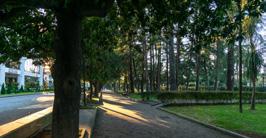
Batumi Boulevard boasts diversity of flora and fauna. A zoo corner located in the heart of the boulevard houses more than 140 species. Let us introduce you to the real star of the zoo corner, a 15-year-old pelican called Bebero (old) who is always ready to interact with guests and pose for photos. Just call his name Bebero.

In Batumi you can easily find a subtropical ever-green palm trees.The development of a dedicated palm alley in the Batumi Boulevard started in 2003 and was finalized in 2006.

The palm alley stretches along the coastline for over 4.7 kilometers.



On the old boulevard, near the alphabet tower, a space created with new tropical trees was arranged. The new tropical square, which is an additional attraction for the old boulevard, is cultivated on an area of 2300 sq.m., where more than 1500 roots of various types of tropical and subtropical plants have been planted. These include Strelitzia, Bamboo, Flax, Banana Trees, Dihondres, Cordylinins, Santolina, Pampas, Palma Yucca, etc. In the tropical square, it is planned to mulch plants and arrange decorative lighting in the near future.
The Japanese garden is set up stretching over 1020 sq.m. nearby the university building.
The garden features a miniature lake, decorative bridge and plants typical for the Eastern culture. Finding the Japanese garden is quite easy thanks to red Japanese style entrance gates.
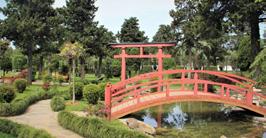
In 1970-ies the writer from Batumi Amiran Shervashidze had an idea to set up a square of prominent poets and novelists in Batumi Boulevard. With this intent, he brought the busts of Lesya Ukrainka and Taras Shevchenko from Ukraine. The busts were located nearby the colonnades leading to the creation of the Ukrainian square. Ukrainian literature’s foremost woman writer, Lesya Ukrainka had special ties with Georgia spending last years of her life here. As it is known, she also visited Batumi few times.

2500 pine trees grow near the coastal line in Batumi Boulevard. Pine trees are renewed annually with new seedlings, where mainly coastal and black pine varieties are planted. The pine alley plays a special health-improving role in the green space of the boulevard and is distinguished by its healing properties along with the sea and mountain climate.


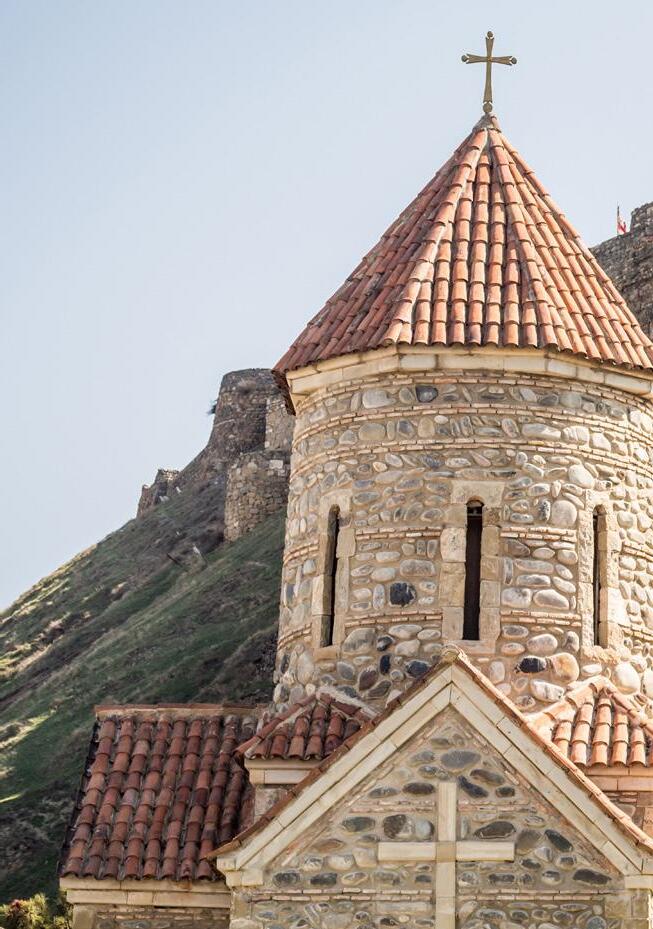
The original fortress, constructed on a hilltop, was named Gori (meaning hill in English), and was mentioned in the Georgian chronicles as early as the VII century. Some historians believe that the fortress was built by Byzantine Caesar Heraclius to store ammunition battles against the Persians.

Just after the XI century the area became an active center for trade. According to some historians, this was due to David the Builder founding the town. Because of its geographical location, enemies frequently targeted the fortress, as conquering it enabled control of the whole Shida Kartli region.
The fortress has been invaded many times and controlled by Ossetians, Iranians and Persians, amongst others. The stronghold has been repeatedly destroyed and rebuilt.
The current iteration of the fortress was built in 1774, during the reign of Erekle II, but was significantly damaged by an earthquake in 1920. The Stalin Museum includes the memorial house where Joseph Stalin (1879-1953) was born, a museum building with a tower, and Stalin’s personal train car he used to visit Tehran, Yalta, and Potsdam.
There are many unique exhibits displayed here, including personal belongings and collections of paintings, photos, films and other important historical artifacts.
The current iteration of the fortress was built in 1774, during the reign of Erekle II, but was significantly damaged by an earthquake in 1920. The Stalin Museum includes the memorial house where Joseph Stalin (1879-1953) was born, a museum building with a tower, and Stalin’s personal train car he used to visit Tehran, Yalta, and Potsdam.
There are many unique exhibits displayed here, including personal belongings and collections of paintings, photos, films and other important historical artifacts.

Gori (Georgian: გორი ) is a city in the Shida Kartli region of Georgia most famous (or infamous) for being the birthplace of Joseph Vissarionovich Jughashvili, better known as Stalin. Today, surprisingly, it does not look much different from when Stalin ruled the USSR.
Gori is also located a short drive from Uplistsikhe, an ancient Silk Road cave city and former regional centre of pagan worship.
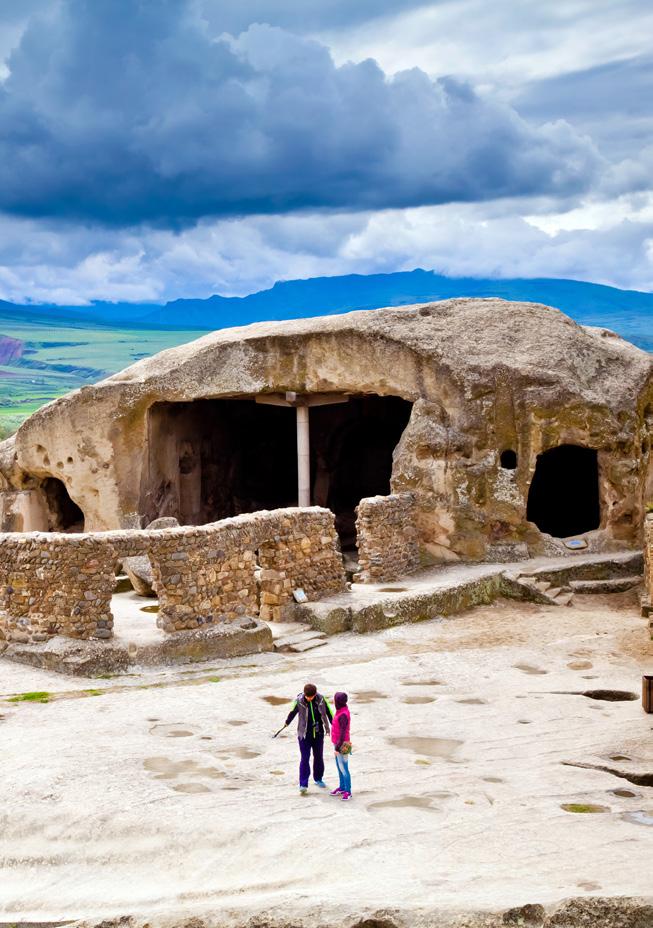
The name Gori may look and sound like the plural form of the Russian word for mountain (горы, GO-ry), but the name of Gori, incidentally meaning hill (singular) in Georgian, is much older than the first Russian contact with the Georgian kingdoms in 1500s.
Many trains run through Gori on their way to or from Tbilisi. Tickets can be purchased at local train stations. Last train to Borjomi leaves at 18:00.
By busMany marshrutkas run daily between Tbilisi’s Didube market and the central square of Gori. If you’re arriving with the metro, go directly through the market (one-story houses) until you reach a square with only marshrutkas on it - just ask one of the drivers. Buses leave hourly from about 7am to 8pm, and the ride costs 3 GEL a person.
By TaxiAnother option is to take a taxi, which also leave from Didube bus station. Listen for the cab drivers calling out “Gori, Gori,” and get in their car. These cars leave as soon as they are full, so your wait could be anywhere from 5 minutes to an hour. The fare for one person in a shared cab should be 5 GEL.
If you do not wish to share a taxi with others, then the cost should be about 20 GEL. Be sure to negotiate this with the driver before you get in the car.

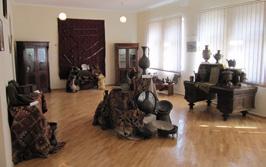
The museum was founded in 1935. Currently, it houses more than 48,100 exhibits, including: handcrafted metal masterpieces, paintings, decorative sculptures, heraldic artifacts, unique Colchis silver coins (the only ones in the former USSR), coins dating back to the time periods of Queen Tamar and David Narin, ancient Eastern coins, epigraphic monuments in Georgian and Arabic languages, collections of manuscripts in the Georgian language, a vast photo archive, and many more attractions.
Address: Gori, Kirion II St.
A church complex and local resort, located at an altitude of 600 meters. Low mineralized hydrosulfite, hydrocarbonchloride and sodium mineral water are used to prepare special therapeutic baths. The baths are used for treatment of musculoskeletal system issues and gynecological diseases; they also have a positive effect on the nervous system. The season for the resort usually runs June through September.

Location: village of Great Gorijvari
Soviet leader Joseph Stalin’s Museum was founded in 1937 and contains 60,000 exhibits. The museum includes the memorial house where Stalin is believed to have been born, an exhibition building, and Stalin’s personal train car, in which he traveled to Tehran, Yalta and Potsdam. The museum also houses Stalin’s personal belongings.
Address: Gori., Stalin Av. №32
Uplistikhe is a rock-hewn city, located just 10 km east of Gori, on the left bank of the river Mtkvari. One of the oldest settlements in the Caucasus region, Uplistikhe is first mentioned within the pages of history in the VII century. Uplistiskhe and its surrounding archeological and architectural monuments belong to a distinct group, the oldest of which dates back to the early Bronze Age, and are considered to be relics of the Kura-Araxes culture.

Alongside the natural biological diversity, the Ateni Gorge features plenty of tourist sites: Great Ateni – Ateni Sioni Church (VII Century), Ateni (Orbeliani) Fortresss (X-XI centuries), the Church of the Virgin Mary, mineral water “Bisi,” and more. Ateni Gorge is also a perfect destination for camping.



The cathedral dates back to the VIII-IX centuries and is located 7 km from the town of Gori. According to sources, it was built by King Vakhtang Gorgasali. Despite the fact that the original structure of the building was not preserved, the VII century architectural style can easily be identified when looking at the building. Ruisi is associated with a number of important political events of the feudal age. Within the walls of this church, George II (1072-1083 AD) was crowned the King of Kartli. During this time, Ruisi was the capital city of Kartli.
The village is located 6 kilometers from the town of Gori. Here you will find several important historic monuments, including: Vere fortress, the Church of Saint George, Vere Church of the Virgin Mary, the Green (Transfiguration) cathedral, Tsedisi Fortress, and other architectural monuments.

The cathedral is located within the Kareli municipality, in the village of Urbnisi. Stylistic elements, as well as paleographic assessments of inscriptions on the northern faзade estimate that the cathedral was constructed sometime in the V-VI centuries. The inscriptions on the facade feature names of the architects - Konstantin and father Mikheil. The rest of the inscriptions refer to dates of the church’s restorations.
(Source: Georgia.Travel)



Mtskheta is a UNESCO World Heritage Site. It has been inhabited since before 1,000 BC and was once the capital of the early Kingdom of Iberia (today’s Eastern Georgia).

Just 20 km from Tbilisi, at the confluence of the Mtkvari and Aragvi rivers, the city is located on an ancient trade route. Archaeologists have unearthed evidence of Mtskheta’s status as a major trading post. Glass perfume bottles, Greek and Aramaic writings, pottery, metalwork and jewelry have all been unearthed in abundance here, and many examples are on show in the town’s museum.
The ancient geographer Strabo described Mtskheta as a highly developed city with a water supply system, markets and stone houses. Mtskheta was also the religious centre of the country, with a number of major shrines to Georgia’s pagan pantheon; these would later be replaced by churches when St. Nino converted the country to Christianity in around 337 AD.
Although the capital was moved to the more easily defended Tbilisi at the beginning of the VI century, Mtskheta continued to be the coronation and burial place of Georgian kings, and the seat of the Patriarch, who is also known as the Bishop of Mtskheta. Today, the lovely old town has a laid back, village feel, especially compared to the more hectic pace of Tbilisi.
- See more at: http://georgia.travel/en/ mtskheta#sthash.G435bsO2.dpuf


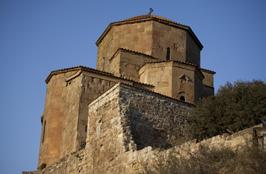
The Museum-Reserve contains archaeological artifacts of national and international importance. A wide variety of exhibits from the Bronze, late Middle Ages, and various ethnographic pieces are also on display.
Bebristsikhe castle is located north of Mtskheta, on the right bank of the river Aragvi. It was called Belta in ancient times. The castle was built in the antique period; its total area equates to approximately 1500 m2 and the inner courtyard is about 600 m2.
The VI century Georgian Orthodox monastery is built on a hill opposite Mtskheta, at the confluence of Aragvi and Mtkvari rivers. Shortly after the adoption of Christianity, King Mirian III erected an enormous wooden cross on this site. In the 2nd half of the VI century Guaram, the ruler of Kartli, built a small church beside the Holy Cross. The church is included on the UNESCO World Heritage Site list.
This historic archaeological monument is located along Mtskheta-Tbilisi highway. Its name is linked to the pagan idol Armazi which was proclaimed the supreme deity by King Parnavaz.
Archeological findings on the territory of Armaztsikhe include segments of wall, towers, structures of the royal residence, and the ruins of the burial vault. Locals refer to Armaztsikhe as Bagineti.


Considering its scale and age, Armazi is one of the most important fortresses in the country. Currently, the remains of the fortress occupy 30 hectares. The fortress used to control the road to bordering countries beyond the Caucasus.

The Zedazeni complex is located 6 km south of the village of Saguramo, on the top of a mountain covered in deep forests. The complex includes the Church of St. John the Baptist, a fortress, and monastic cave cells.


The monastery is located 8 km from Mtskheta, on the left bank of the Mtkvari River. It was constructed in the beginning of the second half of the VI century by one of the Assyrian fathers named Shio. The complex includes facilities of different time periods: a cave church, the Church of St. John the Baptist, a bell tower, the church of Shio, St. Mary’s Assumption Cathedral with its tower, refectory, and rock-cut caves - reservoirs, clergy houses, a spring, a water supply system and the Ascension Church.
The museum complex includes the residence, auxiliary buildings, and the family vineyards of the famous Georgian writer and public figure Ilia Chavchavadze (1837-1907). The museum preserves memorial items and manuscripts from the writer, photo portraits of famous XIX century Georgian public figures and photographs reflecting the time period. Location: village Saguramo

If have already packed your backpack and are ready to explore the mountains of Ajara, we will help you choose and plan the right route. Our region has a lot of interesting destinations one can marvel over : adventure routes, including in the alpine zone, as well as cultural, historical, culinary or wine routes. All these are accompanied by incredibly picturesque landscapes making your camera working hard throughout your whole journey.
Route type: linear
Route type: walking, car, cycling
Difficulty level: easy
Total: 14.2 km
Maximum height above sea level: 938 m
Duration: 5-6 hours
Cellular coverage area: full
Recommended route: April - October.
The route starts from the village of Milisi and follows a dirt road. It can be completed either by car, preferably 4WD, or on foot. After you reach the border of Machakhela National Park, then you can walk or drive by car through Uchkhiti to Machakhela Gorge.
The distance from the village of Milisi to Mount Milisi is 4 kilometers. This distance is best covered with an all-wheel drive vehicle. Further, you need to walk a 5-kilometer path from Mount Milisi to Mount Archangel (Machakhela National Park). Here the route crosses the walking trail of Machakhela National Park and continues southeast of the crossing point along a dirt road. After 1 kilometer, a concrete road begins, and after another 4 kilometers the road leads to the Visitors’ Center of Machakhela National Park.
The route continues from the Visitors’ Center of Machakhela National Park. To the north, there is a concrete road to the village of Acharisagmarti. After 4 kilometers, the trail turns into unpaved road again. This is where you need an SUV. After 1 km you will come to a road junction. To the west of it, the mountain trail of the Archangel continues. After 2 kilometers, you will meet another crossroads, from where the road leads to the village of Uchkhiti in the northern direction. But our route goes east to the village of Milisi, 4 km from the specified intersection of roads.
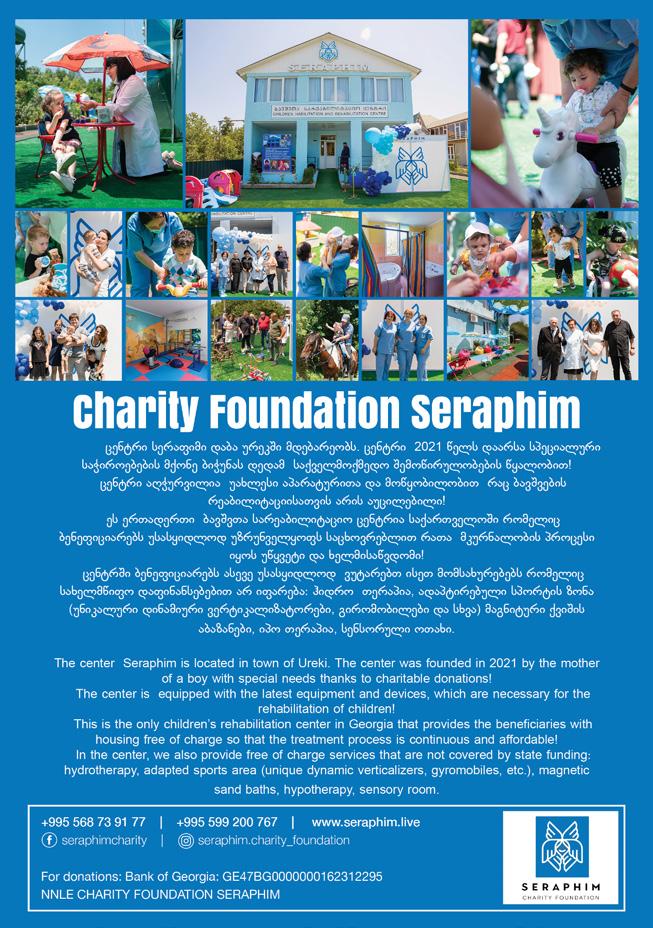
The total length of the route is 45 km
The length of the car road section is 11 km
The length of the pedestrian section is 34 km


Difficulty of the route: medium
Route type: pedestrian, car (4x4)
Duration of the route: three days, two nights
Maximum height above sea level: 2518 m
Cellular coverage area: partial
Season: May-September
It is better to go with an experienced guide. The walk along the wilderness trail will take 2-3 days and requires good physical fitness, use of GPS, orientation in the terrain, as well as the ability to read maps of the area. For spending the night, you will need a tent, which you need to take with you along with other necessary things. We start the route from the village of Akho, which is located 50 km from Batumi, in the municipality of Keda. In the village of Akho, you can visit a monument of national importance - the Akhos Jame (mosque), built on the ruins of a Christian church.
At the beginning of the village of Khinotsminda, there used to be the Church of St. John the Baptist, which by its construction technology dates back to the 8th-9th centuries. According to historical data, only the altar has survived, which in 1919 it was completely destroyed. During the route, travelers will spend the night in Khinotsminda, in the local guest houses or in tents.
5.8 km from Khinotsminda, in the vicinity of Mount Sarbiela, there is a crossroads, from where a 4.4 km hiking trail leads to the north to Lake Tbikeli, and a 9-km trail to Jvarimindori to the east. The trail from Khinotsminda to Lake Tbikeli is marked, its length is 10 km.
Lake Tbikeli, located between the mountains, fascinates at first glance with its oval shape and mirror surface. Around it you will find a very clean meadow and unspoiled nature.

The distance from the village of Akho to the beginning of the walking route is 11 km. This section of the route can be driven by an off-road vehicle. After passing 6.6 km to the north, the route enters the village of Khino. Only one family lives in this village, there is a monastery and the ruins of an old church. According to legend, the name “Khino” is associated with Queen Tamar. Once this village was visited by Queen Tamara and a big feast was held in her honor. Hence the name of the village “Khino” (Lkhini, Lkhena - feast / feast) originated.
The 4-kilometer section of the trail from Khino to Khinotsminda passes through the forest along a dirt road. If you accidentally bump into a vehicle while traveling on the road, you can take it and save your time.
Lake Tbikeli is located at an altitude of 2200 meters above sea level. If you look closely at the clear water, you will easily notice the Caucasian newts in it, listed in the Red Book of Georgia.
You can spend your second night in tents near Lake Tbikeli. It is important to know that there is no telephone connection or the Internet and you cannot contact anyone from here if necessary. In addition, the lake is foggy in the evenings and windy at night. Considering all of the above, it is better to return and spend the night in tents at the already marked place (in Khinotsminda).
Jvarimindori is a spacious alpine meadow, often covered with fog, with wooden cabins. A traveler who has come here from afar can relax in these houses and eat fresh local products.

MARCH 24-25-26
BATUMI BOOK & HIGHER EDUCATİON 2023


MAY 19-20-21
ტურიზმისა და სასტუმრო აღჭურვილობის მე-14 საერთაშორისო გამოფენა
JULY 7-8
SEPTEMBER 8-9-10
საქორწილო დიზაინისა და სილამაზის პირველი
საერთაშორისო გამოფენა
სამშენებლო მასალების, ტექნოლოგიებისა და უძრავი ქონების მე-12 საერთაშორისო გამოფენა
OCTOBER 6-7-8
აგრო-სასურსათო პროდუქციისა და ტექნოლოგიების მე-11 საერთაშორისო
NOVEMBER 17-18-19

Route type: circular
Route type: pedestrian, car, horse, bicycle
Difficulty of the route: medium
Total route length: 32.1 km
Maximum from sea level: 2641 m
Duration of the route: 12 hours 40 minutes
Cellular coverage area: partial Seasons: May-September
The route starts from the road connecting the center of Khulo and the Gorjomi gorge. The route starts from the road connecting the center of Khulo and the Gorjomi gorge. The village of Mindadzeebi is located two kilometers from here. The route runs along the paved road.
After passing through the village of Mindazeebi, a dirt road for off-road vehicles begins. It passes through the forest. After 8 kilometers, the route reaches the gorge of the Chudurouli River. This spacious plain has been home to numerous folk festivals and events for many years. On holidays, shepherds from Adjara, Adigeni and Guria gather here. Locals call this place Chudurouli.
Next, you need to follow the trail northwest of the Chudurouli river bank. Here you will come across a sign from which you must again follow the river to the northwest towards the Jangjnari yayla.
After reaching the yayla, you must follow the road west to the pass. Here the route intersects with a dirt road that leads east to the Leknari Yaila through a place called “Bodishi”, connecting with the road leading to the village of Gorjomi and the resort of Bakhmaro. To the north, the
trail leads to Mount Tbiseri. On the way, you will pass a place called Karchkhlikapana, Mount Satseravi and reach the Chidila Pass, where the route again follows the unpaved, off-road road connecting Gorjomi and Bakhmaro. After 3 kilometers, you will arrive at the Kikibo Yayla and reach your destination.
The circular route continues from the Kikibo yayla to a dirt road leading to the Chidila pass. From here, to the southeast, you need to cross the road leading to Mount Satseri, which first leads to Mount Tbiseri and then to Mount Karchkhlikapani.
You will cross the alpine fields towards the mountain and reach the pass where the road intersects. At the crossroads, the road goes northeast to Yaila Janjnari, east to Yaila Leknari and southeast to Chudurouli.
From Chuduruli, a dirt road leads through the forest to the Mindadzeebi village.

31 декабря вся наша семья собралась в Сахли и встретила Новый Год вместе!
Нас было более 100 человек.
Хотим выразить огромную благодарность нашей команде, которая все подготовила и отнеслась к нашему празднику с полной ответственностью!

Также, огромное спасибо всем, кто поддержал нас, поздравил и разделил с нами этот прекрасный вечер!
Желаем ВСЕМ счастливого Нового 2024 года!
С любовью, ваш дом Сахли
Photo by @sargsyan.ph








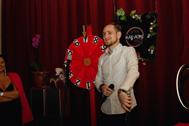




У нас необыкновенная дружеская атмосфера, которая способствует продуктивному общению
и сотрудничеству.
Именно на этой
площадке мы нашли очень много друзей, партнеров, спонсоров и единомышленников.
Большое спасибо
каждому участнику нашего клуба и приглашаем всех, кто еще не был у нас.
Приходите! Вам понравится!
Business Community Batumi

Business Breakfasts-Best Networking platform!
Вот уже более двух лет мы собираемся каждое воскресенье в 12:00. Формат мероприятия:
• Самопрезентация
• Знакомство со всеми участниками
• Вопросы/запросы
• Общение на актуальные
темы
• Фото и видео отчет
• Приглашение в бизнес чат
• Вкусный завтрак
Бизнес Завтрак - это прекрасная возможность познакомиться с активными и творческими людьми. За два года наш бизнес клуб стал очень большим и популярным. Каждая встреча и каждое знакомство несет пользу.
Наша цель:
• поддержать
предпринимателей и специалистов
• поделиться опытом и нужными контактами
• помочь, при необходимости
• общение и дружба
• развитие бизнеса и услуг
• и многое другое...
У нас необыкновенная дружеская атмосфера, которая способствует продуктивному общению и сотрудничеству.
Именно на этой площадке мы нашли очень много друзей, партнеров, спонсоров и единомышленников. Большое спасибо каждому участнику нашего клуба и
САМЫЙ ПОПУЛЯРНЫЙ ФОРМАТ В НАШЕМ БИЗНЕС КЛУБЕ - БИЗНЕС ЗАВТРАК. ЛУЧШАЯ НЕТВОРКИНГ ПЛОЩАДКА!
приглашаем всех, кто еще не был у нас.
Приходите! Вам понравится!
Каждое воскресенье в Сахли 1
Время: 12:00
Стоимость 35 лари (завтрак
включен в стоимость)
Участие ТОЛЬКО по
предварительной ЗАПИСИ
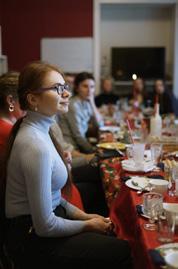
На фото: Юбилейный Бизнес Завтрак #90
Наш инстаграм: @business_community_batumi
Локация: @sakhli_batumi
BCB - is the community which unites people from different spheres of businesses but with one goal, promote its businesses and share its experiences. Throughout the year we unite various entrepreneurs, business people and specialists. Our community counts over 700 members.

We dont mentor or put out our opinion, we created a platform where people can share their experiences with potentials of collaborations between each business sphere.
We are always happy to meet new members and do not divide people into categories.


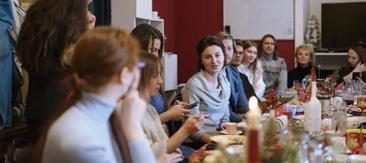
Our doors are always open to everyone! Would like to express special thanks to Ajara Life Magazine for the opportunity to announce our community.

“
OUR COMMUNITY COUNTS OVER 700 MEMBERS, WE ARE ALWAYS HAPPY TO MEET NEW MEMBERS AND DO NOT DIVIDE PEOPLE INTO CATEGORIES.
OUR DOORS ARE ALWAYS OPEN TO EVERYONE!Photo by: @likagvianidze
Here, Chef Elene shares her recipe for Kharsho.

Kharsho (Georgian: ხარშო), also known as Kharcho, is a traditional Georgian dish, usually made with beef or chicken. It can be made with walnuts and with or without rice.



Ingredients
1 whole chicken
350 grams of walnuts
2 medium sized onions
3 cloves of garlic
1 heaped tbs of tomato puree
5 tbs of oil
1 tsp of dried marigold
1 level tsp of blue fenugreek
1 level tsp of dried coriander
1 tsp of dried red pepper and salt.
Instructions
Cut the chicken into medium to large pieces and add, together with 5 tbs of oil (3-4 if the chicken is fatty) to a deep pot. Cook for 15 minutes on a low to medium heat.
Finely chop the onions and add to the pot. Continue to cook for 10 minutes, stirring frequently. Add 1.5 liters of water. Stir and cook for a further 10 minutes on a medium heat.
now Grind the walnuts and garlic together. Add 1 heaped tbs of tomato puree, 1 tsp of dried marigold, 1 level tsp of blue fenugreek, 1 level tsp of dried coriander, 1 tsp of dried red pepper, and salt (amount dependent upon personal preference) to the ground garlic and walnuts. Stir in 1 cup of the chicken juices and mix thoroughly.
Stir and cook on a medium heat for 3-4 minutes and then serve.
Bon appetit!








We are passionate about hospitality. Every day we host travelers from all around the world and we know everybody wants an awesome holiday experience. This is why we offer the very best, hand selected vacation properties in Batumi. The apartment you’ll be staying at is special, because it’s a labor of love and attention of a dedicated group of people we call the Ruebush Hospitality Group.
Our team has designed, planned, and developed this property with your maximum comfort in mind. –Whether you’re traveling for business, or on a long-awaited holiday, we’ll be happy to make your trip a hassle-free, and enjoyable experience. The exclusive collection of apartments in our portfolio shares the same common denominator – excellence. We aim to deliver excellence in every aspect: from beautifully designed spaces, to the quality of your sleep, and the impeccable daily service.

We’re incredibly grateful that you’ve taken notice! Over the past 6 years we have hosted thousands of guests. We have thousands of reviews averaging 5 stars. We often get requests for direct bookings, so now we’ve finally created a space for you to book with us directly without incurring any additional channel fees.















